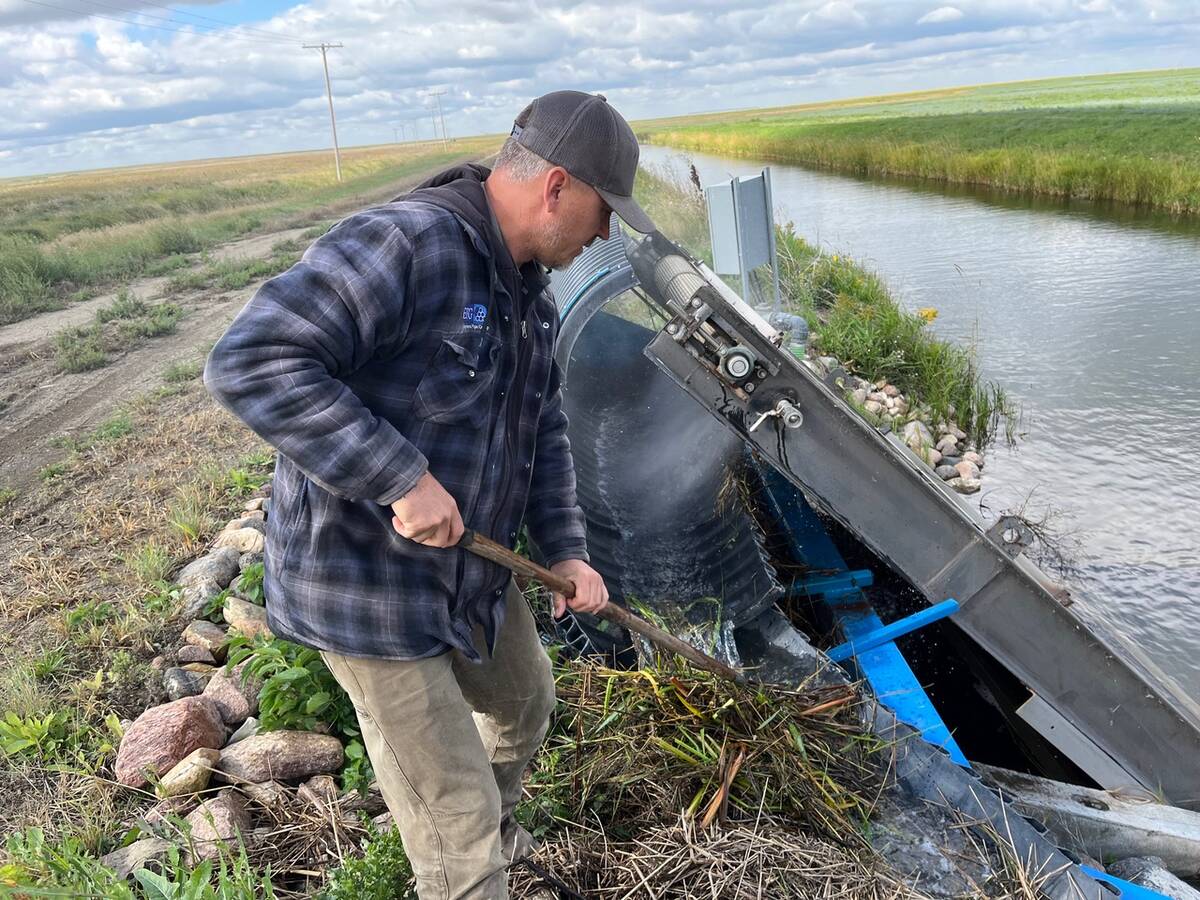MACDOWELL, Sask. – All is quiet this time of year on Len and Marlene Gobeil’s acreage north of MacDowell – or as quiet as it can be with five children under the age of 10 in the house.
The yard is blanketed with snow and surrounded by trees, muffling sound and creating a peaceful atmosphere.
But spend time there and it’s obvious the property is only taking a break for the winter.
An extensive network of playhouses and playground equipment sits next to an 18 hole miniature golf course. A concession stand waits silently for customers and picnic tables are organized on one side of the driveway.
Read Also

Saskatchewan farmer uses tile drainage to manage water
The integration of both irrigation and tile drainage results in higher yields, water efficiency, improved soils and less nutrient runoff, says one producer.
But when visitors explore deeper into the yard, its true purpose becomes clear. Cages house a lynx, bobcat, foxes and raccoon. Corrals contain alpacas, llamas, an emu, rheas and an ostrich. Various kinds of exotic birds and rodents and a boa constrictor live in a long, narrow barn.
This is Noah’s Ark Family Fun Park, which the Gobeils have been carving out of the bush on their 15-acre property since 1999.
Originally city kids from nearby Prince Albert, they moved to the MacDowell acreage in 1992 with plans to set up a dog boarding business. A long building was constructed to house the dogs, but the business never materialized. Instead, the barn became the focal point of an exotic and farm animal zoo.
The park received its inspiration from a number of sources. Marlene was working in the kitchen of a Prince Albert hotel in the late 1990s, and her boss wanted to invite a petting zoo to set up in the parking lot. But none could be found in the area.
At the same time, Len was talking about building a large playground for children and selling used toys.
As their family began to grow, the Gobeils noticed there wasn’t much for children to do in their part of Saskatchewan.
These inspirations coalesced into Noah’s Ark, which opened in the late summer of 1999, featuring a zebra, peacocks, Barbados sheep, rabbits, pygmy and fainting goats, and miniature donkeys.
During the month it was open that year, 1,000 people visited the park. Today, between 4,000 and 6,000 visitors pass through the gates every year between mid-April and mid-October, and the zoo features more than 100 animals of about 55 species.
The Gobeils had a lot to learn as they expanded.
“You might build a fence that didn’t work due to traffic,” Len said.
“You’re trying to protect the animals and also protect the children. You’re always moving something or rebuilding it because it didn’t work.”
The learning curve was particularly steep because of their lack of experience raising livestock, but they received a lot of help from their farm neighbours.
“They must have thought, ‘what a bunch of stupid city people’ when we came out here,” Marlene said.
When they first bred goats, they were delighted to find triplets, but didn’t know that the mother will only take two kids. Neighbours taught them how to bottle feed the third one and how to find the right nipples.
An early concern was caused by not knowing the age of many of their animals.
“You could go down (to the corrals) one hour and an hour later something’s dead,” Marlene said. “And I’m going, ‘what did I do wrong?’ “
Finding veterinary help for the animals, including exotic chickens, was sometimes difficult.
“How many farmers try to save a chicken?” Marlene said.
“If there’s something wrong with it, there’s something wrong with it.”
They have also learned about the harsher side of agriculture.
They buy 300 laying hens a year, selling the eggs to raise money to buy feed to fatten the hens, which are then fed to the lynx, bobcat and foxes.
Every spring they buy a Jersey bull calf, which is castrated and used as a popular attraction in the zoo. During the off season, the steer is butchered for the family’s freezer.
“We don’t usually tell people what we do with them,” Marlene said.
“That’s not something they want to hear.”
The Gobeils think the park has been good for their family. Their five children range in age from a few months old to nine years, and the older ones are allowed to lead tours, which Len said has cured shyness they might have had. It has also allowed him and Marlene to work full-time on the farm in the summer, taking jobs only in the winter to make ends meet.
But the Gobeils also think the park is good for their visitors.
“They come out here, they spend four hours, and they still don’t want to leave,” Len said.
















